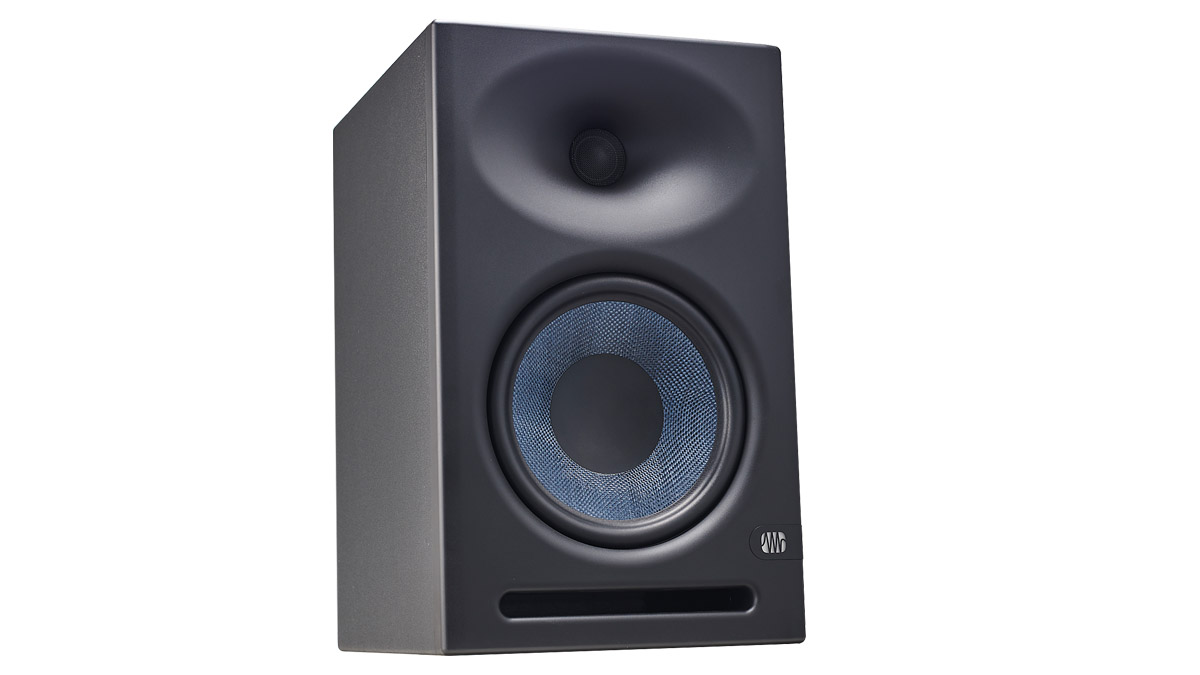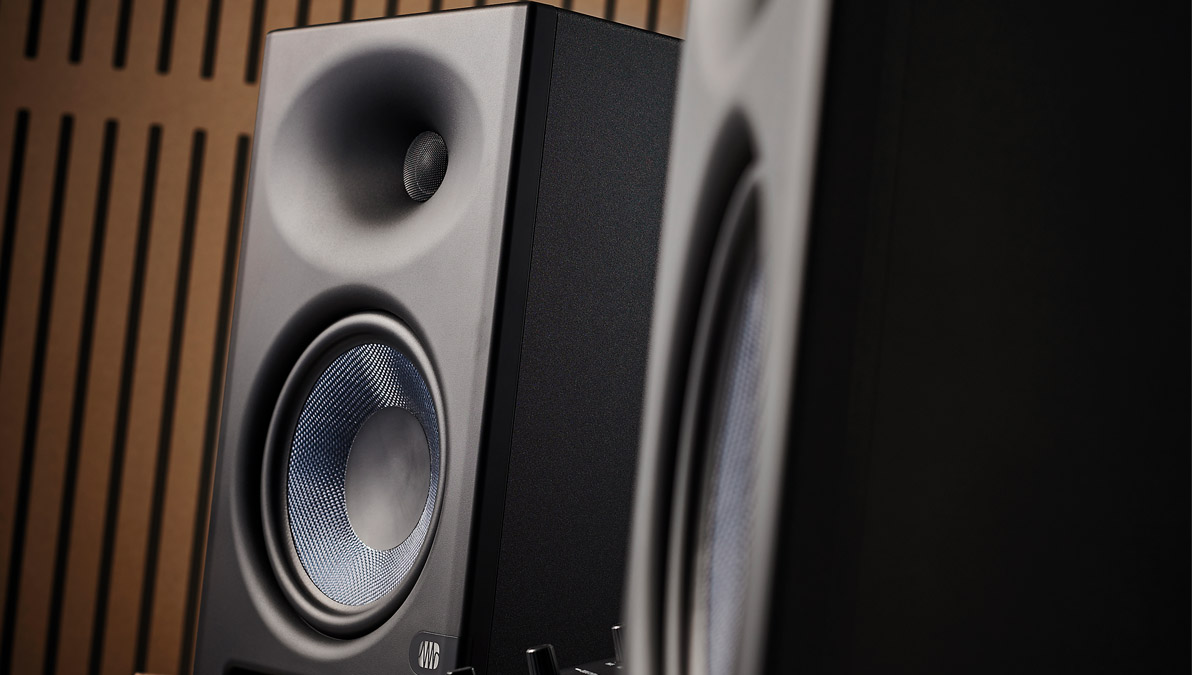MusicRadar Verdict
The E8XT is a big, powerful monitor that doesn’t overstep the mark. Simple to set up and, importantly, excellent value for money
Pros
- +
Broad sweet spot.
- +
Plenty of tweaking options.
- +
Three separate inputs.
- +
Great value.
Cons
- -
Midrange is a bit laid-back.
MusicRadar's got your back
What is it?
PreSonus produce three different mid/nearfield studio monitor ranges incorporating various interesting features like co-axial drivers (Sceptre) and ribbon tweeters (R-Series).
But their most traditional design, Eris, is actually their most successful, and sports a slotted front port, woven woofer and silk dome tweeter. The range first appeared in 2013 and the original E8 scored a respectable 4/5 in our review with particular mention for its tone-shaping options, volume and bass delivery.
The whole range has now received an overhaul and, although visually similar, it has both obvious and subtle differences. We have the 8” model (E8XT) for review and the most striking difference is its new EBM tweeter waveguide. This dominates the top third of the front baffle and contributes to the box being a couple of centimetres taller.
The amps deliver plenty of punch if you need it, but the low frequency delivery feels suitably controlled
The new elliptical boundary-modelled design is the work of WorxAudio’s Hugh Sarvis who also contributed much to their R-Series monitors and CDL reinforcement speakers. Its broad shape delivers a wide horizontal dispersion (100 degrees) and narrower vertical dispersion (60 degrees).
Performance and verdict
The horizontal width is very obvious when you first sit in front of them, and although the vertical dispersion is clearly narrower, We didn’t really struggle to find a sweet spot.
This is particularly good news when it comes to slightly larger monitors as you’re more likely to be a bit further away or in a bigger space, or a combination of both. It’s also handy for group listening or tracking situations.
The smaller E5XTs also benefit from this same style waveguide. As before, the new cabinet is slightly larger and though made from the same vinyl-laminated medium-density fibreboard as before, it’s a new design, meaning better, more focused low-frequency extension.

Beyond this, many of the features will be familiar to existing E8 owners and include both unbalanced (RCA) and balanced (TRS and XLR) inputs, class AB amplification and a bunch of controls on the back.
Here, in addition to input gain, you’ll find mid-peak and high-shelf EQs, low-cut filter (off, 80Hz and 100Hz) and a room correction option (0dB, -2dB and -4dB). This last feature curtails frequencies below 800Hz and helps when the monitors are in corners or up close to walls.
The amps deliver plenty of punch if you need it, but the low frequency delivery feels suitably controlled

• KRK Rokit 7 G4
KRK’s Rokit monitors look and sound the best yet, and the RP7 represents an excellent balance of power, footprint and price.
• Genelec 8010A
High-quality monitoring that combines portability and durability at a sensible price.
The control is quite impactful and we found the -2dB setting was more than adequate when they were right up against a wall. Give the monitors a bit of free space and we found the setting totally unnecessary.
In fact, the overall tonal balance of the E8XTs is pretty good and we didn’t initially feel the need to hit the EQ. However, having AB’d with some other monitors it became obvious the mids were a bit restrained, and a small boost from the mid-EQ (1kHz) sorted this.
Overall, the E8XT delivers the sort of scale one expects from slightly larger monitors and, coupled with the broad sweet spot and extended bass, they’re great for both tracking and mixing.
The amps deliver plenty of punch if you need it, but the low-frequency delivery feels suitably controlled, and with no EQ option to boost low frequencies you can’t get too out of shape. Build quality is also excellent, and with a list price matching their predecessor, these monitors offer incredible value.
MusicRadar verdict: The E8XT is a big, powerful monitor that doesn’t overstep the mark. Simple to set up and, importantly, excellent value for money PreSonus E8XT.
Hands-on demos
Sweetwater
Digital Stereophony
Specifications
- Key Features: Drivers: 8” woven reinforced LF, 1.5” silk dome HF Frequency response: 35Hz to 20kHz Crossover: 2.2kHz Inputs: RCA (unbalanced) TRS and XLR (balanced) Amplification: 75W (LF), 65W (HF) EQ: Mid peak and high shelf (+/-6dB max)
- Size: 406(H) x 292(D) x 248(W) mm
- Weight: 10.43kg
- PreSonus
Jon is a London based platinum award winning mixer, producer, composer and club remixer with a diverse CV that spans dance, pop, rock and music for media. He’s also a long term contributor to MusicRadar's music technology tutorials and reviews. Whether working alone or collaborating he usually handles final mixdowns, so you’ll also find MusicRadar peppered with his handy mixing tips.
“Excels at unique modulated timbres, atonal drones and microtonal sequences that reinvent themselves each time you dare to touch the synth”: Soma Laboratories Lyra-4 review
“I used everything I knew about music”: How Green Day exceeded expectations with their most ambitious song
YouTube just added AI tools that makes musicians, library music and video editors redundant











